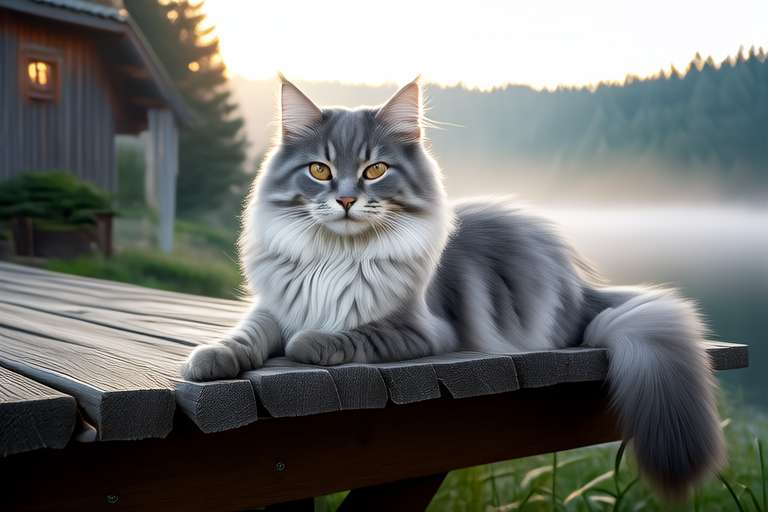How Norwegians Are Raising Their Pets Uniquely
Norway, a country known for its stunning landscapes, rich culture, and progressive policies, also stands out in the realm of pet care. The unique way Norwegians raise their pets is a blend of traditional practices, cultural influences, and innovative approaches that cater to the diverse needs of both pets and their owners. This article delves into the specifics of how Norwegians are raising their pets uniquely, highlighting practices, cultural influences, climate impacts, innovative products, and distinctive laws.
Unique Norwegian Pet Care Practices
The Norwegians have developed a range of unique pet care practices that reflect their deep connection with nature and their pets. One such practice is the concept of ‘friluftsliv,’ which translates to ‘open-air life.’ This philosophy emphasizes the importance of spending time outdoors, even during harsh winter months. Many Norwegians take their dogs for walks in the snow, ensuring they get enough exercise despite the cold weather. This tradition has been passed down through generations and is deeply ingrained in the Norwegian way of life.
Another unique practice is the use of heated dog beds and cat mats. Given the extreme temperatures during winter, these products provide comfort and warmth for pets. Additionally, many Norwegians incorporate homemade pet treats made from locally sourced ingredients. This not only ensures the health of their pets but also supports local farmers and producers.
Cultural Influences on Pet Ownership
Pet ownership in Norway is heavily influenced by the country’s rich cultural heritage. Historically, dogs have played a significant role in Norwegian society, particularly in rural areas where they were used for hunting and herding. Today, this legacy continues as many Norwegians consider their pets as part of the family. The strong bond between humans and animals is evident in the way Norwegians treat their pets with respect and affection.
Moreover, the Norwegian culture places a high value on sustainability and environmental protection. This ethos extends to pet care, with many owners choosing eco-friendly products and services. For instance, some pet groomers offer natural shampoos and conditioners made from organic ingredients. Similarly, there is a growing trend towards adopting rescue animals, reflecting the Norwegian commitment to animal welfare.
Climate Impacts on Pet Raising
The Norwegian climate presents unique challenges and opportunities for pet owners. The long, dark winters can be tough on pets, especially those with shorter coats. To combat this, many Norwegians opt for hypoallergenic breeds that are better suited to the cold weather. They also ensure their pets have access to indoor heating and warm bedding.
In contrast, the short summers provide ample opportunity for outdoor activities. Many Norwegians take advantage of the summer months to hike with their dogs or let their cats explore the great outdoors. The abundance of parks and nature reserves in Norway makes it easy for pet owners to find safe and enjoyable spaces for their pets to play.
Innovative Pet Products and Services
The pet industry in Norway is constantly evolving, with new and innovative products and services emerging all the time. One such innovation is the advent of smart pet feeders that allow owners to monitor and control their pet’s food intake remotely. These devices are particularly useful for busy professionals who may not always be home to feed their pets.
Another notable development is the rise of pet-friendly hotels and cafes. Recognizing the growing demand for pet-friendly accommodations, many establishments in Norway now offer designated areas for pets. Some even provide special amenities such as pet beds and bowls. In addition, there are several mobile apps available that help pet owners manage their pet’s health, including tracking vaccinations and scheduling vet appointments.
Distinctive Laws and Regulations Affecting Pets
Norway has a robust legal framework governing pet ownership, with laws designed to protect both pets and their owners. One of the most significant regulations is the requirement for all dogs to be microchipped. This ensures that lost pets can be easily identified and returned to their owners. Additionally, there are strict rules regarding the importation of pets, with all animals required to undergo quarantine before being allowed into the country.
The Norwegian government also provides financial support for pet owners through various programs. For example, there are subsidies available for spaying and neutering pets, as well as for adopting rescue animals. Furthermore, there are laws in place to regulate the sale and breeding of pets, ensuring that all animals are treated humanely and ethically.
Local Traditions and Modern Adaptations in Pet Care
While Norway has a rich history of pet care, it is also embracing modern innovations to improve the lives of pets and their owners. One example of this is the increasing popularity of pet therapy. Many hospitals and nursing homes in Norway now offer pet therapy programs, where trained animals visit patients to provide comfort and companionship.
Another adaptation is the growing trend towards pet-friendly urban planning. Many cities in Norway are incorporating green spaces and dog parks into their designs, making it easier for pet owners to enjoy the outdoors. Additionally, there is a greater emphasis on education and awareness around responsible pet ownership, with many organizations offering workshops and seminars on topics such as training, nutrition, and behavior management.
Conclusion
The way Norwegians raise their pets is a testament to their deep connection with nature and their commitment to animal welfare. From traditional practices like ‘friluftsliv’ to innovative products and services, Norwegian pet care is a unique blend of old and new. By embracing both local traditions and modern adaptations, Norwegians are ensuring that their pets lead happy, healthy, and fulfilling lives. As the pet industry continues to evolve, it will be interesting to see how Norwegian pet care practices continue to develop and adapt to meet the changing needs of both pets and their owners.
